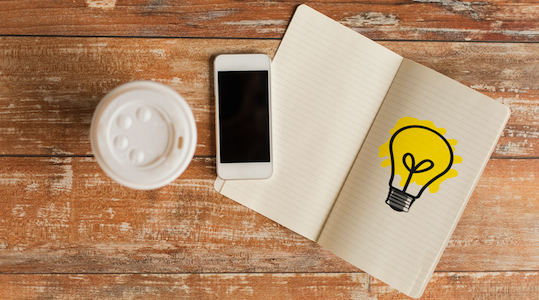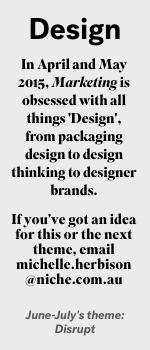Design for mobile engagement
Share

 Julie Ask, vice president and principal analyst at Forrester Research, and co-author of The Mobile Mind Shift, writes of the importance of the ‘D’ in the ‘IDEA’ cycle.
Julie Ask, vice president and principal analyst at Forrester Research, and co-author of The Mobile Mind Shift, writes of the importance of the ‘D’ in the ‘IDEA’ cycle.
Mobile is not a new technology, but 62% of ebusiness professionals surveyed by Forrester in 2014 still treat it as one. Rather than leveraging mobile to do new things, ebusiness professionals are still using mobile as a scaled-down version of the web. This is myopic. In fact, mobile generates new revenue, improves customer relationships and reduces costs throughout all channels. Organisations that don’t embrace the variety of new opportunities that mobile gives them will miss out on opportunities in retail, travel, financial services, entertainment, insurance and many other industries.
Mobile contributes to the business – not just through selling, but also beyond – because it can:
1. Drive spontaneous purchases
Mobile liberates buyers from stores and homes. It’s uniquely suited to flash sales, because it reaches people anywhere with targeting based on location, time of day and past behaviours. This is great if you’re selling exclusive, highly curated, limited-edition inventory, whether it’s sneakers or a hotel room. But it can also work for a department store targeting local consumers who’ve made a purchase in the past year.
2. Influence sales
Mobile influence can generate far more revenue than mobile selling. You can use mobile to both drive consumers into stores and help them make decisions, by offering access to ratings, reviews, product descriptions and pricing. Retail, automotive, hospitality and financial services firms benefit when consumers have information at their fingertips to inform purchase decisions.
3. Create new paid services opportunities
The combination of rich contextual information and quick in-app purchases can generate new sales instantly. For example, Lark, a connected sleep-monitoring wearable device and mobile app, sells coaching services to consumers who want to improve their sleep.
You have opportunities to sell new digital services delivered on the phone, such as coaching, feedback or analysis. You can also connect buyers to sellers of physical assets, from empty parking spots to cars or clothing by tracking real-time supply and demand.
4. Expand the potential audience with pay-as-you-go services
Mobile changes the cost structure of delivering services, opening up markets to lower-income consumers. The rise of pay-as-you-go phone services like MetroPCS in the US demonstrates how successful this can be. In Africa, consumers can pay as they go for utilities like electricity that, in other parts of the world, require monthly billing. Also in the US, people use mobile phones to unlock and pay for access to [car rental and sharing service] Zipcars. Consider what your company could sell to these types of consumers if you let iTunes take care of the billing.
Use the ‘IDEA’ cycle
To seize these opportunities, marketers need to understand how to connect with customers in their mobile moments. Armed with the knowledge of their mobile customer, marketers can use the ‘IDEA’ cycle to identify, design, engineer and analyse mobile moments. That is:
- Identify moments in your customer’s journey that you can ease with a mobile experience,
- design the mobile interaction to be intuitive and easy to use, as well as helpful,
- engineer your marketing systems to respond effectively to those interactions, and
- analyse the results to ensure that you are reaching and engaging with this new breed of shifted customers effectively.
If a customer does not use your app or site in the mobile moment, then the moment will pass and the opportunity will be lost. This is why the ‘design’ phase is critical, as you will need to match a customer’s motivations in their mobile moment to your business goals. The resulting engagement is constrained by a tiny screen and the huge expectations set by five-star consumer apps. Accordingly, you must use agile development to create a continual delivery process to rapidly launch, learn and pivot to deliver value in the moment.
Ask yourself three questions: one to help you design your engagement and two more to help you prioritise the mobile moments to tackle first:
1. What service will you provide?
To get the mobile engagement right, you have to deliver what a customer or employee expects in the simplest way possible. For American Airlines, the app streamlines a traveller’s journey, from flight status to check-in, to finding the right gate and so on. For a mobile point-of-sale system like the one US jewellery retailer Alex And Ani has built, the app needs to be simple enough that an employee will use it with a customer to check inventory, take payment and help with any last-minute questions or substitutions.
2. What benefit does it bring a customer?
What will motivate someone to pull out their phone or tablet and turn to you for help? That analysis starts with a simple investigation of how the app or site helps a customer meet their goal. Extend that with higher-order benefits: does it accomplish that goal in seconds? Is it convenient to use? Is it enjoyable to use? Mike McCue, CEO of social media app Flipboard, aims to replicate the visual beauty of a magazine on a mobile device, while improving the experience through sharing and convenience. That’s his way of elevating ‘bringing joy’ to the level of corporate strategy.
3. What value does it bring to your company?
If a customer benefits but you don’t, then you’ll find resources quickly drying up. Overcome this flaw by committing only to mobile moments that increase customer revenue or loyalty, or improve an employee’s productivity. Apps that enable people to serve customers faster create openings for new sales, as the mobile apps for [US direct-broadcast satellite service provider] Dish Network do for its field service reps.
Design with the knowledge that mobile moments will fill your day as everything connects. Phones were first. Tablets came next. But in the next few years, these devices will be joined by dozens more that will address our needs in a mobile moment. By 2020, your customers could have 30 connected products delivering mobile moments, not just the handful they have today. So stop thinking only about phones and apps. Instead think about and design for the moments in your customers’ and employees’ lives, and consider what service you can provide in those moments that will be intuitive, easy to use and helpful.
Forrester is a Marketing content partner – non-commercial collaborations with leading organisations on content for the magazine (like this article) as well as exclusive benefits for Marketing Advantage Members. Click here to find out more. www.marketingmag.com.au/advantage















